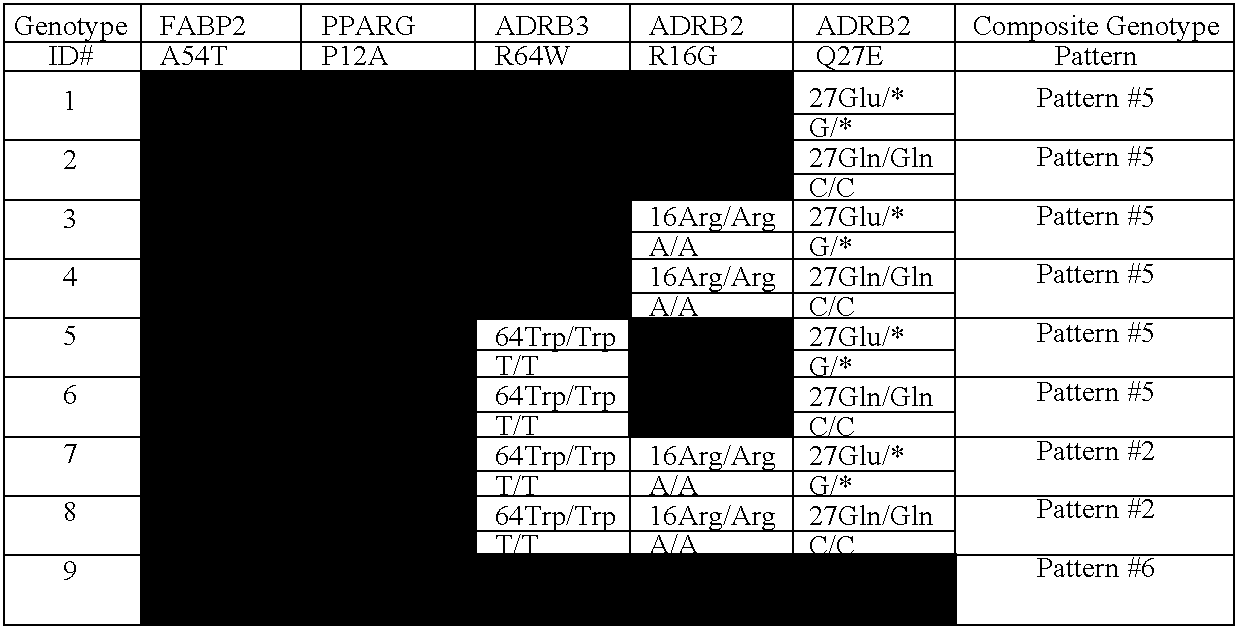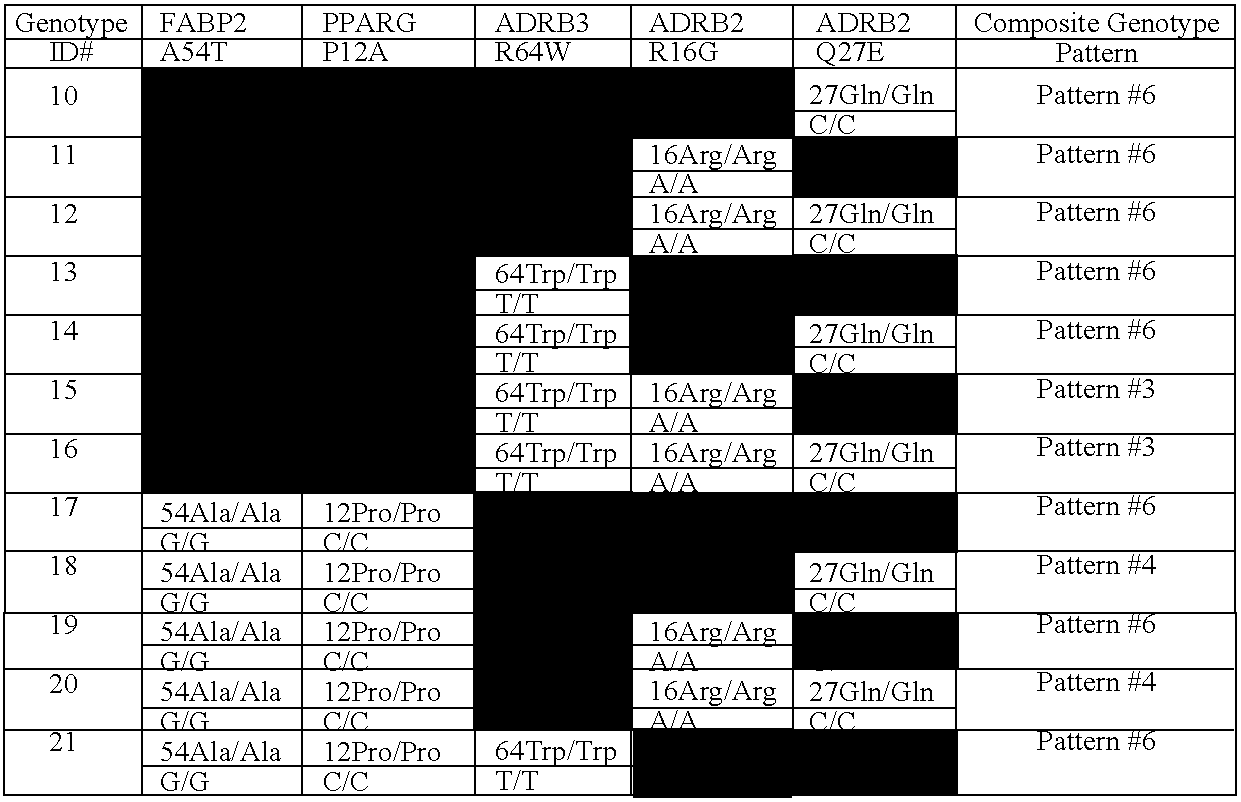Genetic markers for weight management and methods of use thereof
a technology of genetic markers and weight management, applied in the direction of ict adaptation, diagnostic recording/measuring, instruments, etc., can solve the problems of increasing the risk of developing one or more serious medical conditions in obese subjects, and achieve the effect of better results
- Summary
- Abstract
- Description
- Claims
- Application Information
AI Technical Summary
Benefits of technology
Problems solved by technology
Method used
Image
Examples
example 1
[0202]A weight management test has been developed from a comprehensive review of clinical studies identifying correlations between genes and variations in weight management-related metabolism; establishing acceptance criteria to identify which genetic variations affect metabolic pathways in ways that are potentially modifiable by changes in diet and lifestyle; determining which genotypes have been shown to increase risk and that suggest a risk that may be modifiable by diet and / or lifestyle intervention; and compiling evidence to support the test configuration chosen, test result interpretations, dietary / lifestyle interventions, and benefit / risk analysis.
[0203]The gene / polymorphism selection criteria required evidence that: the polymorphism has a significant association with a weight management phenotype (e.g., weight, body fat, body mass index) as seen in evidence from three or more independent, similar studies that showed the same genotype association; the gene has a biologically ...
example 2
Clinical Genotyping Method
[0235]DNA was either extracted from buccal swabs (SOP #12, version 1.3) or purchased from the Coriell Cell Repositories. The isolated DNA was used to PCR amplify regions of sequence surrounding five SNPs (SOP #29, version 1.0). The resulting four amplicons from each sample were treated with exonuclease I (Exo) and shrimp alkaline phosphatase (SAP) to remove excess primers and nucleotides (SOP #29, version 1.0). The purified amplicons were used in the single base extension (SBE) reaction with primers specific to its SNP target (SOP #30, version 1.0). Once the SBE was completed, SAP was again added to remove unincorporated nucleotides (SOP #30, version 1.0). The SBE product was then analyzed on the Beckman Coulter CEQ8800 with a standard of known migration size (SOP #15, version 1.4 and SOP #16, version 1.3). All genotypes, with the exception of PPARG (rs1801282), were assayed on the forward DNA strand. PPARG (rs1801282) was assayed on the reverse DNA strand ...
PUM
 Login to View More
Login to View More Abstract
Description
Claims
Application Information
 Login to View More
Login to View More - R&D
- Intellectual Property
- Life Sciences
- Materials
- Tech Scout
- Unparalleled Data Quality
- Higher Quality Content
- 60% Fewer Hallucinations
Browse by: Latest US Patents, China's latest patents, Technical Efficacy Thesaurus, Application Domain, Technology Topic, Popular Technical Reports.
© 2025 PatSnap. All rights reserved.Legal|Privacy policy|Modern Slavery Act Transparency Statement|Sitemap|About US| Contact US: help@patsnap.com



